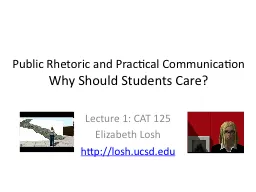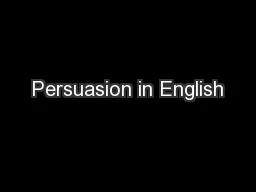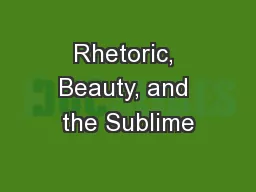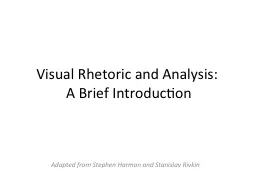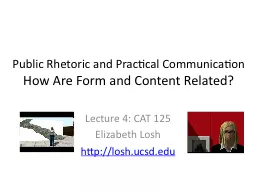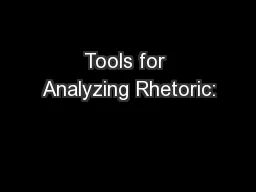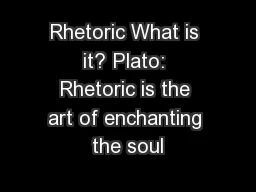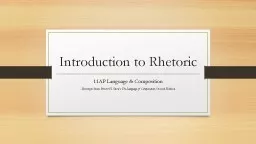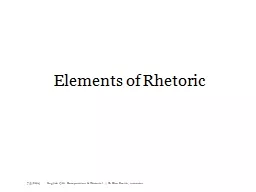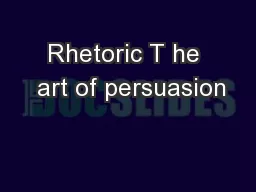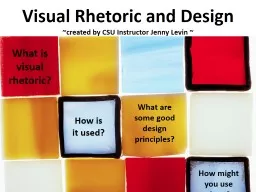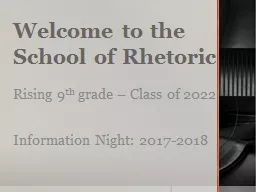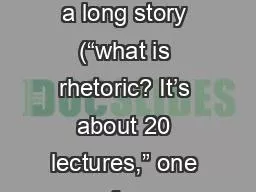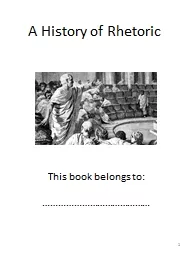PPT-Public Rhetoric and Practical Communication
Author : alida-meadow | Published Date : 2016-08-03
Why Should Students Care Lecture 1 CAT 125 Elizabeth Losh httploshucsdedu Who Will You Be in Two Years A graduate student A corporate intern A school teacher
Presentation Embed Code
Download Presentation
Download Presentation The PPT/PDF document "Public Rhetoric and Practical Communicat..." is the property of its rightful owner. Permission is granted to download and print the materials on this website for personal, non-commercial use only, and to display it on your personal computer provided you do not modify the materials and that you retain all copyright notices contained in the materials. By downloading content from our website, you accept the terms of this agreement.
Public Rhetoric and Practical Communication: Transcript
Download Rules Of Document
"Public Rhetoric and Practical Communication"The content belongs to its owner. You may download and print it for personal use, without modification, and keep all copyright notices. By downloading, you agree to these terms.
Related Documents

